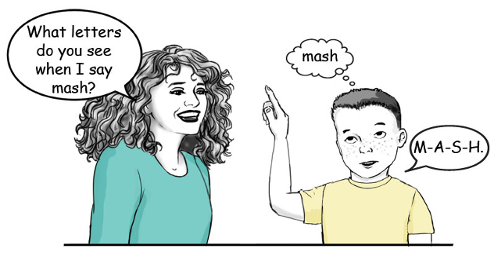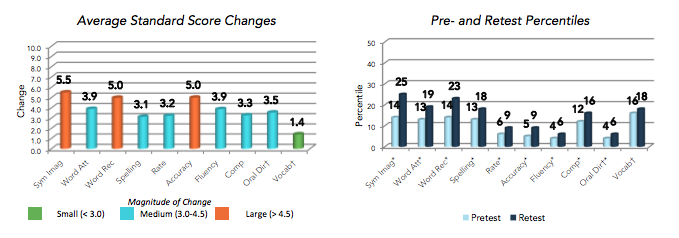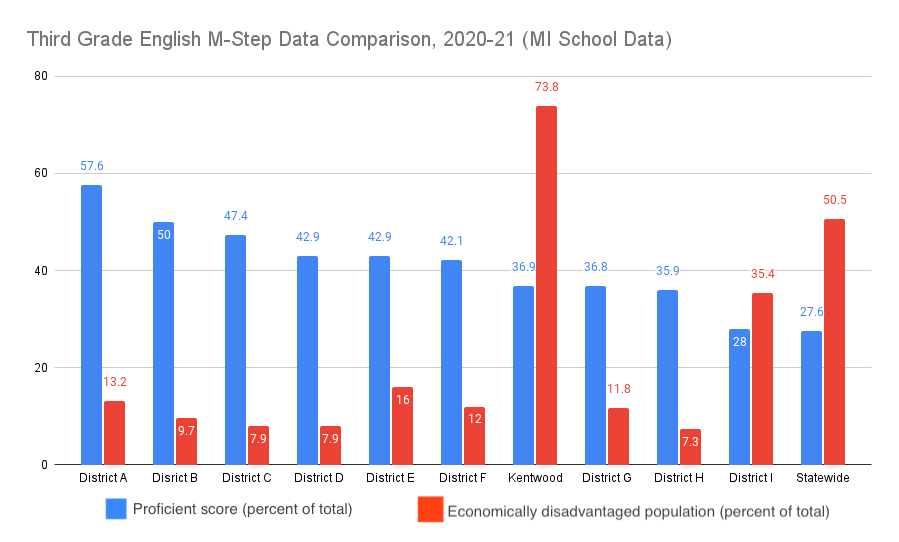Districts Respond to Legislation Mandating Evidence-Based Literacy Programs and PD

In 2018, when asked how Sheryl McCarthy’s district has sustained Lindamood-Bell’s literacy programs and professional development model, her response was straightforward.
“Very simply, student success has motivated Kentwood to stick with Lindamood-Bell programs for the past 15 years.”
McCarthy is a Reading Consultant for Kentwood Public Schools (KPS), a west Michigan district of just under 10,000 students near Grand Rapids, about an hour from Lake Michigan. In 2017, students represented over 90 countries and 70 different languages. 73.8% of students are economically disadvantaged, compared to the state average of 51.73%.
Learn more about Kentwood Schools
Though Kentwood’s student population is unique, its needs are not. Like thousands of districts across the country, Kentwood is responding to new statewide legislation that requires a scientifically proven reading approach. Michigan’s law is one of the few that requires retention. “I believe a research-based, sensory-cognitive reading program is exactly what current opinions and legislation surrounding reading is looking to provide,” notes McCarthy. “KPS used the Michigan Reading Law as the impetus to extend the use of [Lindamood-Bell’s] programs from small groups only to the Word Block instruction in the classroom for Young 5s through second grade in some of our buildings. Lindamood-Bell [instruction] remains current and effective for us in Kentwood.”
Watch a 90-second clip explaining the way Lindamood-Bell’s Seeing Stars® program “rewires” the brain
Lindamood-Bell’s approach is based on the cognitive science of learning, delivering what struggling readers universally lack—an effortless sensory connection to reading and comprehension. Educators are first taught why their students struggle, then trained to identify and remediate the underlying causes of their difficulties.

Each program follows a universal scope and sequence of steps, with the level of difficulty and pace of forward movement in the teacher’s control. This makes the Lindamood-Bell approach effective as one-on-one instruction, in groups, in classrooms, as interventions, and as a supplement to a curriculum.

Read a five-minute article on imagery’s role in literacy, cognition, and memory]
In Kentwood, instruction is implemented by paraprofessionals and teachers, overseen by in-district instructional leaders, and supported by Lindamood-Bell coaches who provide job-embedded professional development.
“Lindamood-Bell does provide us all with a common language when discussing intervention needs,” says McCarthy. “In my experience, teachers in Kentwood are very receptive to coaching. The most prevalent concern at the beginning is probably that coaching might be evaluative. Establishing relationships of trust with teachers and their students through modeling lessons, and collaborating after the lessons, quickly negates this concern. I’ve found this—relationships with staff and students—to be the key to coaching success.”
“We quickly started adding general education students who were struggling to learn to read, or had been brought to a Child Study Team for possible qualification for a reading disability. We found that giving these Tier 1 students access to intentional instruction using a research-based, sensory-cognitive program allowed many of these students to avoid qualifying for special education services with a reading disability,” notes McCarthy.
Kentwood’s communication and carefully crafted intervention model have paid off. Since the beginning of the partnership, Kentwood has seen growth every year with its struggling readers. During the 2018-2019 school year, 223 at-risk readers who took part in remediation saw mostly large and medium Standard Score changes in key components of reading.
Number of Students: 223
Average Age: 9.1
Average Hours of Instruction: 83.8
Lindamood-Bell Programs Implemented: Seeing Stars®
Outcome Measures:
- Symbol Imagery Test
- Woodcock Reading Mastery Test-3rd (word attack)
- Wide Range Achievement Test-4th (reading and spelling)
- Gray Oral Reading Tests-4th (rate, accuracy, fluency, and comprehension)

see intervention results from districts using Lindamood-Bell across the country
And while students are continuing to progress, they are demonstrating that they are starting to close the gap as opposed to regressing further behind (as has often been the trend with at-risk students). In 2020-2021, the district’s economically disadvantaged students ranked within the same range or above on their Third Grade English M-STEP as those in districts rated in Michigan’s top ten; 73.8% of Kentwood’s students are described as economically disadvantaged, compared to an average of 14.6% percent of students in the districts amongst the top ten.

This success is due in large part to the positive culture in Kentwood Public Schools. “Our staff, overall, strives for excellence; I have found that they welcome coaching input as a means to become more excellent teachers,” says McCarthy.
Lindamood-Bell works with districts across the country to bring sensory-cognitive instruction to staff and students, from principals to dyslexia specialists to paraprofessionals. Reserve your spot in one of our public workshops, or contact our For Schools team to learn how Lindamood-Bell PD can complement your district literacy model to meet legislation, build capacity, maintain sustainability and affect student achievement at all levels.
Citations:
Schwartz, S. (2022, March 31). More states are making the “science of reading” a policy priority. Education Week. https://www.edweek.org/teaching-learning/more-states-are-making-the-science-of-reading-a-policy-priority/2021/10
Scott, M. (2017, March 24). Kentwood teachers connect with culturally diverse students. mscott2@mlive.com. https://www.mlive.com/news/grand-rapids/2017/03/kentwood_teachers_effectively.html
State of Michigan. (n.d.). From preschool through postsecondary, and into the workforce, MI school data is the state of Michigan’s official source for education data. MI School Data. Retrieved May 12, 2022, from https://www.mischooldata.org/






